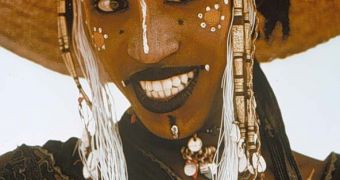Our parasites are so intimately attached to us that they share not only their life with us, but also their evolution, a phenomenon called co-evolution.
That's why the way we evolved can be traced in the way our bugs evolved.
A new research made at New York University College of Dentistry (NYUCD) comes with surprising evidence on how early humans started colonizing the planet, spreading out of Africa to Asia, based for the first time of the analysis of the oral bacteria.
The team, led by Page Caufield, a professor of cariology and comprehensive care at NYUCD, found that Streptoccocus mutans, a bacterium species involved in dental caries, has co-evolved with us in a clear lineage that can be tracked down to a single common ancestor for the current human species, Homo sapiens, who inhabited Africa between 100,000 and 200,000 years ago.
Offspring get this bacterium from the mother, and the bug seems to install in an infant's oral cavity when he/she is roughly two years old. Due to the mother-infant transmission, the DNA of the S. mutans can be analyzed the way mitochondrial DNA is investigated.
Caufield's team employed DNA fingerprints and other biomarkers on the bacterial DNA to track down human evolution to a single common female African ancestor, the "ancestral Eve."
"As humans migrated around the world and evolved into the different races and ethnicities we know today, this oral bacterium evolved with them in a simultaneous process called coevolution. It is relatively easy to trace the evolution of S. mutans, since it reproduces through simple cell division," Caufield said. In other words, a bacterium is a perfect clone of its "mother", which can be modified only by mutations, but not by sex.
The team gathered during 20 years over 600 samples of the bacterium on six continents, getting on over 60 strains of S. mutans from Chinese and Japanese; Africans; African-Americans and Hispanics in the US; Caucasians in the US, Sweden, and Australia; and Amazon Indians in Brazil and Guyana. "By tracing the DNA lineages of these strains, we have constructed an evolutionary family tree with its roots in Africa and its main branch extending to Asia. A second branch, extending from Asia back to Europe, traces the migration of a small group of Asians who founded at least one group of modern-day Caucasians," Caufield said.
The next analysis will visualize this coevolution of humans and bacteria from Asia populations that passed to North and South America.

 14 DAY TRIAL //
14 DAY TRIAL //